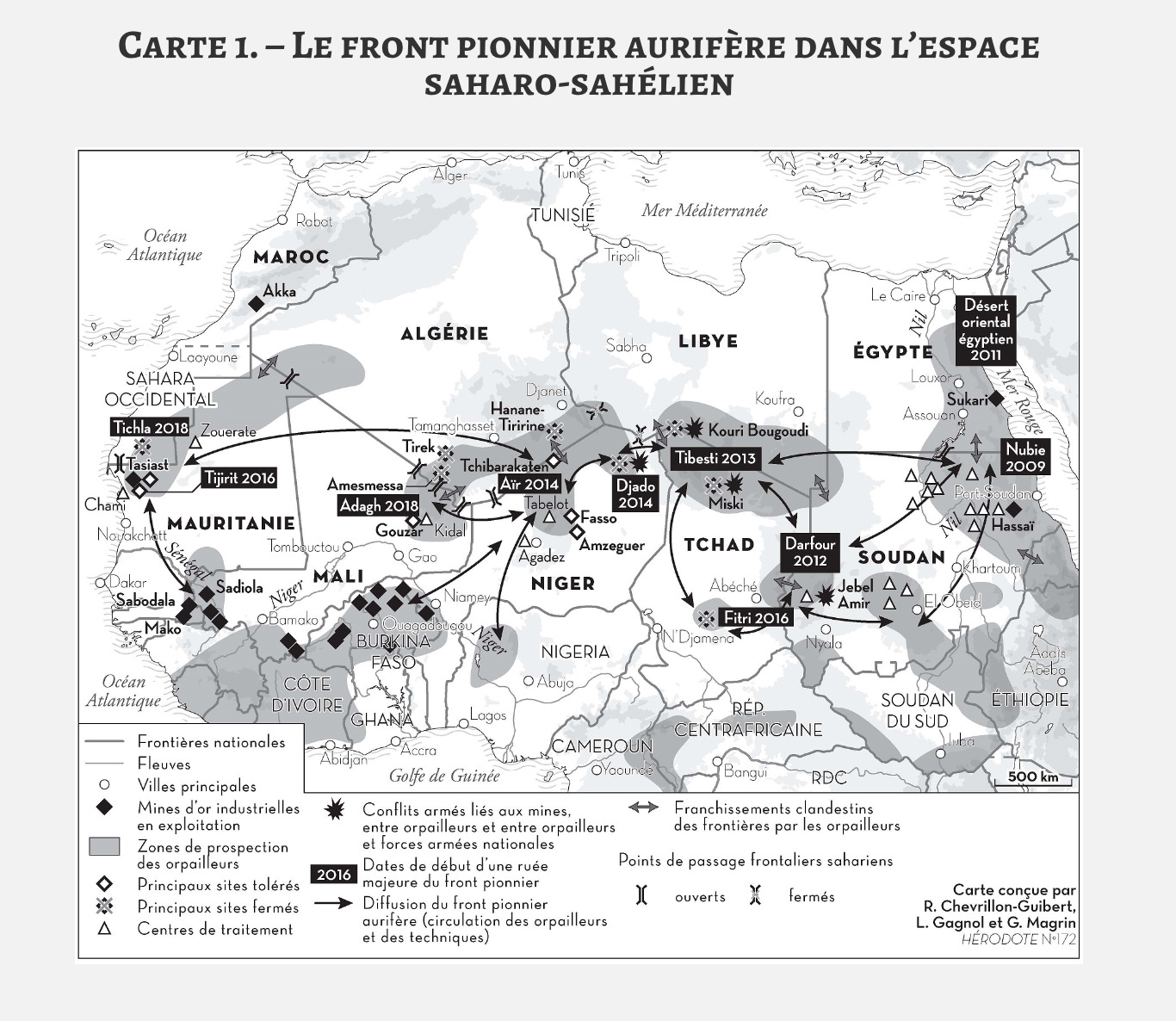He's right about the gold but our interest is more focused on the Russian desire for a naval base at Port Sudan and the American desire to thwart the Russians, both of which he does get to. But back to Tooze, Chartbook #209, April 18:
Sudan is a pivotal link in the increasingly fragile and violent geopolitics of both the Sahel and the Red Sea/Horn of Africa regions. The bloody fighting across the country that began on April 15 is the result of a clash between the two most powerful military forces in the country - General Abdel Fattah al-Burhan, president since October 2021, and General Mohamed Hamdan Dagalo, better known as Hemeti (Hemetti, Himedti), Sudan’s vice-president and commander of the powerful paramilitary Rapid Support Forces. The fighting is driven by rivalry between the generals, heading different factions within the security forces in the wake of the ouster of long-time President al-Bashir in April 2019. They represent different power groupings in Sudan and enjoy sponsorship from rival outside forces. Al-Burhan is connected to Sisi in Egypt. Hemeti is thought to be closer to the Emiratis. Both have links to Russia. But the condition of possibility for this clash are the political economy of Sudan to which one of the keys is gold. As the work of a brilliant group of French scholars reveals, the emergence of General Hemeti as a challenger for power in Khartoum, is a reflection of the power-shift brought about within Sudan and the wider region, by a spectacular gold rush.
***
As the International Crisis Group reported in 2019:
In central Sahel (Mali, Burkina Faso and Niger), gold mining has intensified since 2012 due to the discovery of a particularly rich vein that crosses the Sahara from east to west. The first finds were made in Sudan (Jebel Amir) in 2012, followed by others between 2013 and 2016 in Chad (Batha in the centre and Tibesti in the north of the country), in 2014 in Niger (Djado in the north east of the country, Tchibarakaten to the north east of Arlit, and the Aïr region in the centre north), then finally in 2016 in Mali (the northern part of the Kidal region) and Mauritania (Tasiast, in the west). The cross-border movement of experienced miners from the sub-region, notably from Sudan, Mali and Burkina Faso, has fuelled the exploitation of these sites. These recent discoveries come in addition to the gold already mined in Tillabéri (western Niger), Kayes, Sikasso and Koulikoro (southern Mali), and various regions of Burkina Faso, making artisanal gold a hugely important issue in the Sahel.

Source: Raphaëlle Chevrillon-Guibert, Laurent Gagnol, Géraud Magrin Hérodote 2019
....MUCH MOREAs it has swept from East to West, the gold rush has been rearranging populations, economic, social, political and military relations across the Sahel. It is a moving frontier of artisanal production similar in some ways to the astonishing helter-skelter development of cocoa planting that I analysed in Ghana and Cote D’Ivoire in Chartbook 196.
The activities of Africa’s artisanal miners have attracted media coverage around the world. This tends to concentrate on the primitive conditions in which they work. Dramatic pictures of artisanal mining conjure up comparisons to the “19th century” or some other imagined past. Frequently comments are made about the stark contrast between the smartphones that the rare earths end up in and the primitivism of the conditions in which gold, coltan etc are mined.
The contrast between affluence and poverty is only too real. But the idea that they reflect different eras of history, or different stages of development is an illusion.
The activity of artisanal mining is quite new in most of the places in Africa that have been caught up in the current resource boom. It has certainly never been practice on this scale before. Giant artisanal mine sites in Mali or Darfur are no more more natural or native to Africa than the deforested cocoa regions of CdI. Furthermore, all this activity involving millions of people organized across huge distance, would not be possible without the extensive use of modern technologies at the African sites of production. In 2018 Mali registered 150 cellphone subscriptions per 100 inhabitants and rising. But there is one gizmo of which the Sahel’s gold miners can claim to be the most important users worldwide - the cheap portable metal detectors, which became widely available in the region around 2008-2009....
*Al Jazeera, March 18, 2022
Sudan: Russian influence and Ukraine war stir domestic tensions